While the exact cause of dandruff remains somewhat elusive, this guide provides a comprehensive overview to empower you in making an informed choice. Instead of pinpointing a single “best” product, the aim is to equip you with the knowledge to confidently select a conditioner that suits your individual needs. Remember, personal reactions to ingredients vary, so some experimentation may be necessary to discover your ideal solution.
This article is structured into three key sections to guide you:
- Decoding Dandruff and Seborrheic Dermatitis: Unpacking what these conditions are and their underlying causes.
- Conditioner Basics & Principles: A clear introduction to conditioners and how they work to benefit your hair and scalp.
- Anti-Dandruff Conditioner Reviews: Detailed evaluations of popular conditioners, grouped by their primary active ingredients, to help you compare and choose effectively.
Let’s dive in and empower you to improve your scalp health!
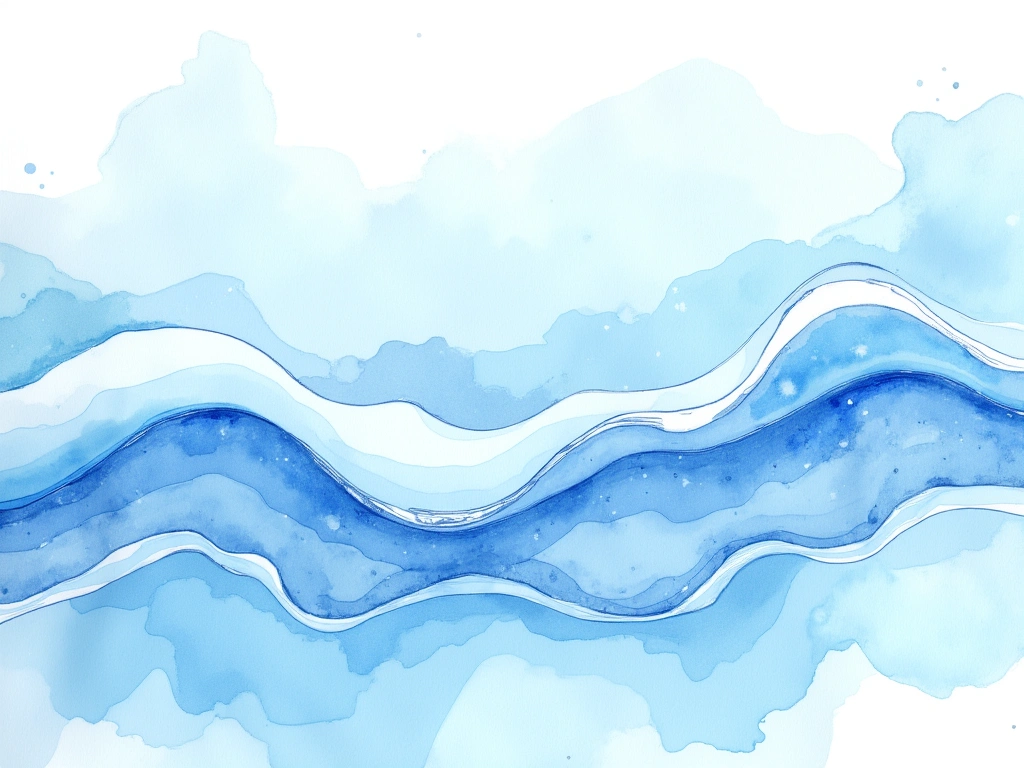
Understanding Dandruff and Seborrheic Dermatitis
Before choosing a treatment, it’s crucial to understand what dandruff and seborrheic dermatitis are, and what triggers them. This foundational knowledge will guide you toward more effective product choices and potentially eliminate unnecessary trial and error. Furthermore, understanding these conditions will help you determine if your scalp issues are indeed dandruff or seborrheic dermatitis, and not something else like product buildup or a condition such as psoriasis (for insights on psoriasis, refer to the section in ).
Key Symptoms of Dandruff
Medical literature generally defines dandruff by these primary symptoms [1, 2]:
- Patches of irritated scalp skin.
- Visible dry flakes.
- Inflammation.
- Possible itchiness.
- In some cases, increased sebum (oil) production.
- In some cases, hair loss.
The Root Causes of Dandruff and Seborrheic Dermatitis
While research continues to evolve, the yeast Malassezia is currently considered the primary culprit behind dandruff and seborrheic dermatitis.
A Closer Look at Malassezia
Malassezia is a common yeast found on the skin of nearly all adults – it’s a commensal organism [3]. For most people, it lives harmlessly on the skin without causing any problems. However, for some, Malassezia contributes to the bothersome symptoms we recognize as dandruff.
The reasons why Malassezia triggers issues in some individuals but not others are still being investigated. Current theories point to a combination of factors:
- Individual Susceptibility: Variations in immune response, potentially similar to an allergic reaction.
- Compromised Skin Barrier: Weakened or unstable top layer of skin.
- Sebum Composition Differences: Variations in the oily secretions produced by the skin [4].
The Role of Oleic Acid
Interestingly, some research suggests that Malassezia itself might not be the direct cause of dandruff symptoms. Instead, the issue may lie in the byproducts of its metabolic processes [5, 6].
Malassezia yeasts are lipophilic, meaning they thrive on oils (lipids) present on our skin. As they break down these oils, they produce free fatty acids as byproducts. One free fatty acid, oleic acid, stands out. Studies have shown that oleic acid alone, in the absence of Malassezia, can trigger the characteristic symptoms of dandruff and seborrheic dermatitis [7]. This has led to the hypothesis that oleic acid, rather than Malassezia directly, is a key instigator of dandruff.
Dandruff vs. Seborrheic Dermatitis: What’s the Difference?
The distinction between dandruff and seborrheic dermatitis can be subtle. Generally, dandruff is considered a milder form of seborrheic dermatitis, primarily affecting the scalp [8]. Conversely, some experts propose that seborrheic dermatitis is a distinct condition with unique clinical characteristics [9].
Core Principles of Dandruff Treatment
Given the link to Malassezia, anti-fungal agents are the cornerstone of dandruff and seborrheic dermatitis treatment. These agents reduce Malassezia activity, effectively decreasing the production of irritating byproducts like oleic acid. This approach has proven to be a highly effective way to manage these conditions.
Emerging research highlights that a dual approach—reducing Malassezia and strengthening the skin’s barrier function—leads to even better treatment outcomes [10, 11]. Therefore, solely focusing on reducing Malassezia might not be the most comprehensive long-term strategy.
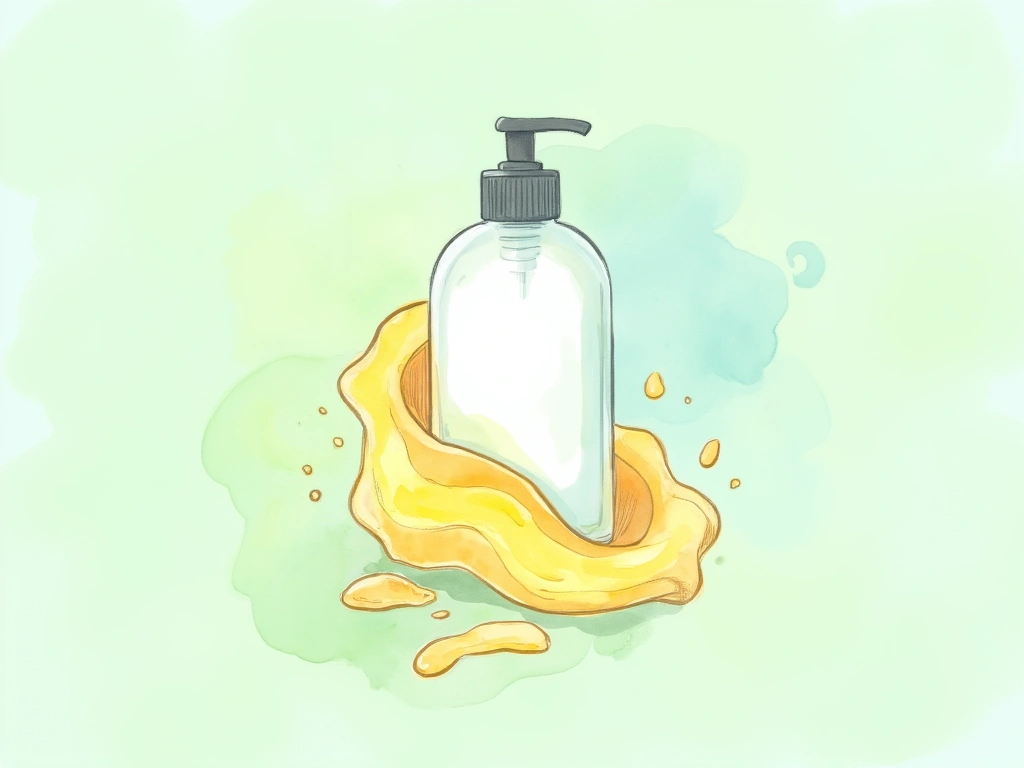
Conditioner Formulas and Their Benefits: The Basics
While shampoos are formulated to cleanse the hair and scalp by removing excess oils, dirt, and product buildup, conditioners serve a different purpose. They are designed to replenish moisture, improve hair manageability, and infuse hair with beneficial ingredients to enhance its look and feel.
Think of conditioner as a specialized skin cream, specifically formulated for your hair and scalp.
Key Components of Conditioners
Most conditioners are composed of a blend of ingredients, each with a specific role:
- Oily or Waxy Substances: These form the foundation of conditioners, providing the primary moisturizing and conditioning benefits.
- Active Ingredients: These components are included to address specific concerns, such as dandruff control.
- Surfactants: In conditioners, surfactants are typically milder and contribute to gentle cleansing and emulsion stability, rather than the strong foaming action in shampoos.
- Emulsifiers: These allow oil-based and water-based ingredients to blend seamlessly, ensuring the conditioner is effective and rinses cleanly.
- Absorption Enhancers: These ingredients can help improve the penetration of beneficial ingredients into the hair and scalp.
- Viscosity Modifiers: These adjust the conditioner’s texture, making it pleasant to use.
- pH Adjusters/Stabilizers: Maintaining the correct pH is crucial for both hair and scalp health and product stability.
- Colorants: Added for visual appeal.
- Fragrances (Parfum): To provide a desirable scent.
- Preservatives: Essential to maintain product safety and shelf life.
Formulators carefully balance these components to achieve the desired performance and benefits of a specific conditioner. Some ingredients may be emphasized while others are minimized or omitted depending on the product’s intended use.
Essential Components in Anti-Dandruff Conditioners
As previously discussed, the primary goal in treating dandruff is to reduce Malassezia yeast activity on the scalp. By controlling Malassezia populations, we can minimize the production of oleic acid and alleviate dandruff symptoms.
Anti-fungal agents are the most common approach to reduce Malassezia. They work by disrupting various processes within the yeast cells, leading to cell death or hindering their reproduction. Different anti-fungal agents employ different mechanisms to achieve this.
Anti-dandruff conditioners incorporate various anti-fungal ingredients into their formulations to help manage dandruff symptoms [12].
The most frequently used anti-fungal ingredients in anti-dandruff conditioners include:
- Zinc Pyrithione
- Sulfur
- Tea Tree Oil
Salicylic acid, while not an anti-fungal, is also used in some anti-dandruff formulations. It helps to exfoliate the scalp, reducing flakes, but its effectiveness may be enhanced when combined with an anti-fungal agent.
Other potent anti-fungal agents commonly found in shampoos, such as ketoconazole, selenium sulfide, and coal tar, are less frequently used in conditioners. This is likely due to safety considerations regarding leave-on application, as conditioners are designed to leave ingredients on the scalp for a period, unlike shampoos which are rinsed out quickly.
The Potential Drawbacks of Shampoos and Conditioners
It’s important to note that some evidence suggests that frequent use of many modern shampoos and conditioners may contribute to hair damage and scalp irritation. Overuse can amplify these effects, potentially counteracting your efforts to improve scalp health. Consider your usage frequency and product types if you experience persistent issues.
Prioritizing Barrier Integrity for Scalp Health
While choosing an anti-fungal agent is a primary focus when selecting an anti-dandruff conditioner, it’s crucial not to overlook the conditioner’s impact on scalp barrier integrity. This is a frequently underestimated factor that can significantly influence the effectiveness of dandruff management.
Remember, Malassezia yeast is present on the scalps of most people, even those without dandruff. Dandruff symptoms arise in a subset of individuals, and a compromised skin barrier is believed to be a key factor in their heightened sensitivity to oleic acid produced by Malassezia.
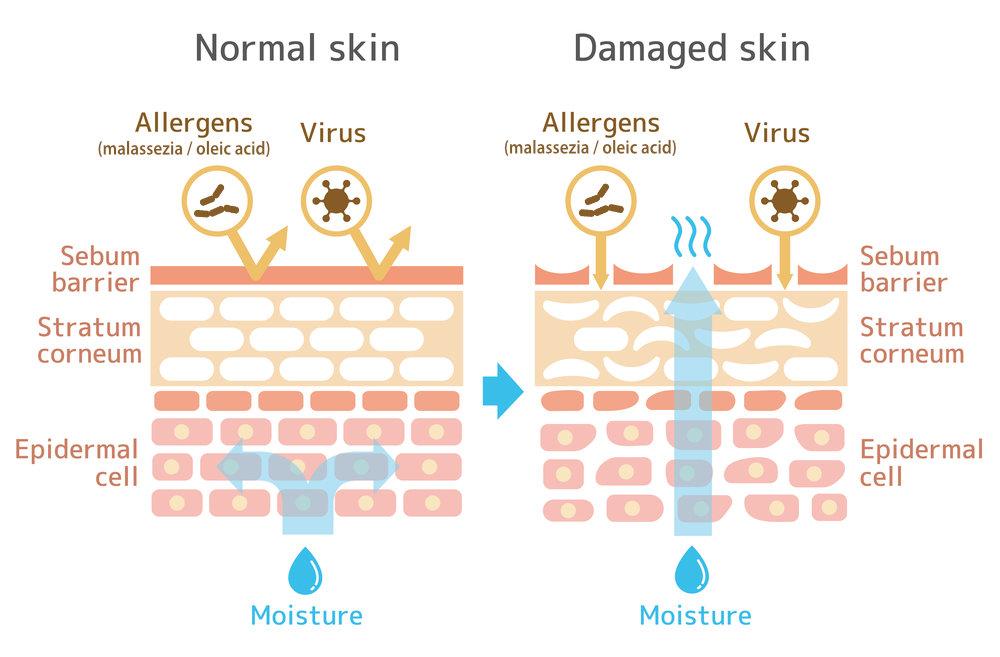
Therefore, an effective strategy for controlling dandruff should not only aim to reduce Malassezia activity but also focus on strengthening the skin’s natural barrier. By improving barrier stability, the scalp becomes more resilient to the Malassezia that is naturally present, leading to better long-term management of dandruff symptoms.
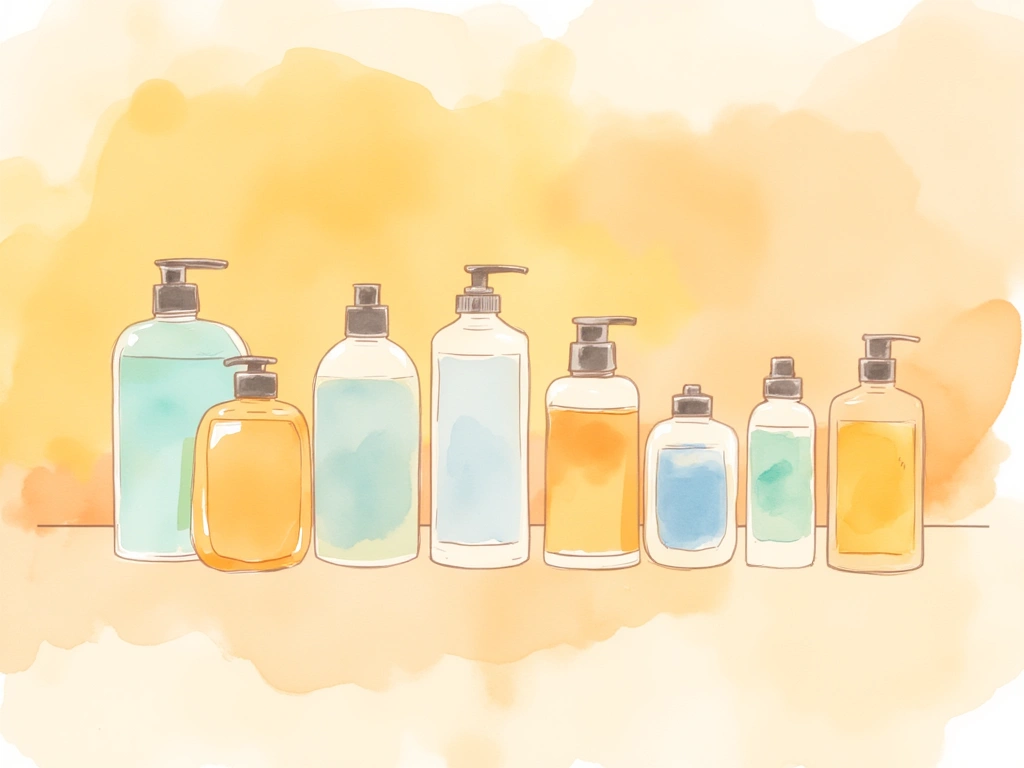
Anti-Dandruff Conditioner Review: Finding the Right Fit
Identifying a single “best” anti-dandruff conditioner is challenging because individual responses to ingredients vary significantly. Instead, it’s more useful to establish evaluation criteria to guide your selection process.
Key Criteria for Evaluating Anti-Dandruff Conditioners
When choosing an anti-dandruff conditioner, consider these factors:
- User Feedback (Aggregate): Assess how the conditioner is rated across various online platforms and reviews, specifically focusing on feedback related to dandruff treatment effectiveness.
- Ingredient Analysis: Evaluate the ingredient list, considering both the beneficial active ingredients and any potential irritants.
- Preservative System: Examine the preservative system used, considering its safety profile and potential for skin irritation.
- Cost and Accessibility: Determine if the conditioner is affordable and readily available for consistent, long-term use.
Top Anti-Dandruff Conditioner Picks
This review highlights a selection of conditioners with unique features that may be particularly beneficial for dandruff management. It is not an exhaustive list, and other effective options likely exist. For each active ingredient category (except zinc pyrithione, which features two options), one representative conditioner is discussed in detail, along with a list of alternative products.
Head & Shoulders – Classic Clean – Zinc Pyrithione Conditioner
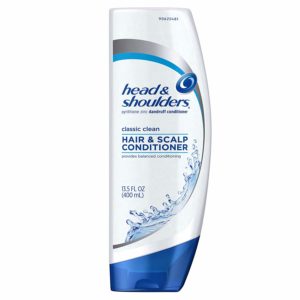
Active Ingredient: Pyrithione Zinc 0.5% Inactive Ingredients: Water, Stearyl Alcohol, Cetyl Alcohol, Stearamidopropyl Dimethylamine, Glutamic Acid, Dimethicone, Fragrance, Phenoxyethanol, Benzyl Alcohol, Citric Acid, Sodium Chloride, Methylchloroisothiazolinone, Methylisothiazolinone.
Starting with a widely recognized name, Head & Shoulders Classic Clean Conditioner represents a typical formula from a leading anti-dandruff brand, mirroring the approach of their popular shampoo.
- Employs zinc pyrithione as its primary anti-fungal agent (a more detailed discussion of zinc pyrithione can be found in ).
- Zinc pyrithione is a widely favored anti-dandruff ingredient in conditioners, largely due to its established safety and compatibility with diverse formulations.
- Preservation relies on a combination of Methylisothiazolinone and Methylchloroisothiazolinone. It’s important to note that these preservatives have been linked to contact dermatitis in some individuals [13].
- The inclusion of fragrance may increase the risk of irritation, particularly for those with sensitive scalps or compromised skin barriers.
- As a mass-market product, it offers good value and widespread availability in most retail stores.
Other Zinc Pyrithione Conditioners to Consider:
- Equate Color Safe Dandruff Conditioner with Pyrithione Zinc
Active Ingredient: Pyrithione Zinc 0.3%. Inactive Ingredients: Water (Aqua), Stearyl Alcohol, Behentrimonium Chloride, Cetyl Alcohol, Dimethicone, Cocos Nucifera (Coconut) Oil, PPG-3 Benzyl Ether Ethylhexanoate, Fragrance (Parfum), Lauryl PEG/PPG-18/18 Methicone, Hydroxyethylcellulose, Sodium Hydroxide, Methylchloroisothiazolinone, Methylisothiazolinone.
- NIOXIN – Scalp Recovery Moisturizing Conditioner
Active ingredient: Zinc Pyrithione. Inactive ingredients:Water, Stearyl Alcohol, Cetyl Alcohol, Stearamidopropyl Dimethylamine, Dimethicone, Glutamic Acid, Benzyl Alcohol, Phenoxyethanol, Fragrance, Propylparaben, Methylparaben, Citric Acid, Mentha Piperita (Peppermint) Oil, Mentha Arvensis Leaf Oil, Menthol, Camellia Sinensis Leaf Extract, Yeast Extract, Lecithin, Saccharomyces/Magnesium Ferment, Biotin/Folic Acid/Cyanocobalamin/Niacinamide/Pantothenic Acid/Pyridoxine/Riboflavin/Thiamine/Yeast Polypeptides, Saccharomyces/Iron Ferment, Saccharomyces/Copper Ferment, Saccharomyces/Silicon Ferment, Saccharomyces/Zinc Ferment.
- MIZANI – Scalp Care Pyrithione Zinc Antidandruff Conditioner
Pyrithione Zinc 1.00%, Water, Cetearyl Alcohol, Behentrimonium Chloride, Glycerin, Peg-180, Amodimethicone, Cetyl Esters, Isopropyl Alcohol, Fragrance, Methylparaben, Hydroxyethylcellulose, Menthol, Trideceth-6, Benzyl Benzoate, Benzyl Alcohol, Benzyl Salicylate, Chlorhexidine Dihydrochloride, Citronellol, Cetrimonium Chloride, Geraniol, Mentha Piperita (Peppermint) Oil, Alpha-Isomethyl Ionone, Rosmarinus Officinalis (Rosemary) Leaf Oil, Pelargonium Graveolens Flower Oil, Lavandula Hybrida Oil, Cucumis Sativus (Cucumber) Fruit Extract, Curcuma Longa (Turmeric) Root Extract, Sclareolide, Rose Flower Oil, Jasminum Officinale (Jasmine) Extract.
- Mane ‘n Tale – Daily Control – Anti-Dandruff Conditioner
Active Ingredient: Zinc Pyrithione. Inactive Ingredients: Water/Aqua/Eau, Cetyl Alcohol, Cetearyl Alcohol, Stearyl Alcohol, Hydroxyethyl Ethylcellulose, Behentrimonium Chloride, Fragrance (Parfum), Dimethicone, Hydrogenated Polydecene, DMDM Hydantoin, Polysorbate 60, Steareth-20, Distearyldimonium Chloride, PEG-150 Stearate, Olea Europaea (Olive) Fruit Oil, Prunus Amygdalus Dulcis (Sweet Almond) Seed Oil, Butyrospermum Parkii (Shea Butter), PEG-8 Amodimethicone, Lauryl Alcohol, Triethanolamine, Stearamidopropyl Dimethylamine Lactate, Keratin Amino Acids, Hydrolyzed Wheat Protein, Citric Acid, Panthenol, L-Arginine, with Extracts of*: Aesculus Hippocastanum (Horse Chestnut) Seed*, Equisetum Arvense (Horsetail) Leaf*, Larrea Divaricata (Chaparral), Spiraea Ulmaria (Meadowsweet) Flower, Trifolium Pratense (Clover) Flower, Tussilago Farfara (Coltsfoot) Flower*, Blue #1 (CI 42090), Niacin, Yellow #5 (CI 19140), Benzyl Benzoate, Hyrdroxycitronellal, Butylphenyl Methylpropional, Limonene, Linalool, Alpha-isomethyl Ionone
Sulfur8 Medicated – Regular Formula – Sulfur Anti-Dandruff Conditioner
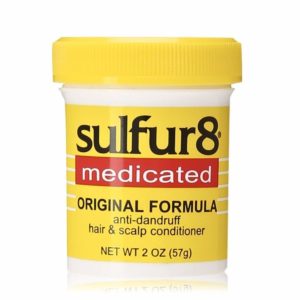
Active Ingredient: Sulfur 2% Antidandruff Inactive Ingredient: Petrolatum, Lanolin, Sorbitan, Trioleate, Polysobate-81, Mineral Oil, Menthol, Triclosan, frgrance
Sulfur8 Medicated Conditioner represents a less common approach, utilizing sulfur as the active anti-fungal ingredient. Its limited popularity may be attributed to its distinct odor.
- This is a very basic, cream-like conditioner, differing significantly in texture from typical conditioners.
- It leverages the documented benefits of sulfur in treating dandruff and seborrheic dermatitis [14].
- User feedback is generally positive, but some report a heavy, greasy feel and potential irritation.
- The tub packaging, while convenient for access, may increase the risk of contamination and product degradation. Triclosan is used as a preservative, likely to address this concern.
- Concerns exist regarding the use of Triclosan in cosmetic products; however, it remains a common and effective antiseptic in clinical settings for enhancing handwashing [15, 16].
- A “light” version is available, but its ingredient list suggests it may still be quite heavy and not significantly different from the regular formula.
- Availability appears primarily online, through Amazon and other retailers.
- The price point (~$6) may seem high for the small 57-gram quantity. However, its water-free formulation means a small amount may go a long way, as typical conditioners can be 70-80% water.
Other Sulfur Conditioners:
- Dr. Robaina – Sulfur Balsam Conditioner
Purified Water, Vegetable-based Emulsifying Conditioning Waxes, Shea Butter, Colloidal Oatmeal, Sulfur Powder, Vitamin A, C, D3, E, Wheat Germ Oil, Jaborandi Pennatifolius Extract, Quina Extract, Capsicum Extract, Polllen Extract, Amica Extract, Nettle Extract, Pfaffia Extract, Egg Yolk Extract, Tea Tree Oil – Likely incomplete ingredients list
Derma E Scalp Relief – Salicylic Acid Anti-Dandruff Conditioner
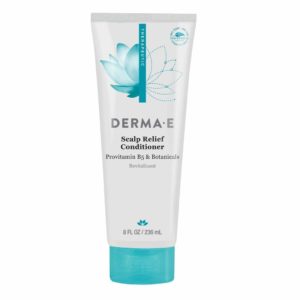
Purified Water, Cetearyl Alcohol (Plant Derived), Glycerin (Vegetable Derived), Propanediol (Vegetable Derived), Behentrimonium Methosulfate, Coco-Caprylate (Coconut Derived), Salix Alba (White Willow) Bark Extract, Diheptyl Succinate, Capryloyl Glycerin/Sebacic Acid Copolymer, Epilobium Angustifolium (Canadian WillowherbTM) Extract, Organic Chamomilla Recutita (Matricaria) Flower Extract*, Menthol, Salicylic Acid, Arctium Lappa (Burdock) Root Extract, Zanthoxylum Zanthoxyloides (Fagara) Bark Extract, Arctostaphylos Uva-Ursi (Bearberry) Leaf Extract, Melia Azadirachta (Neem) Leaf Extract, Coptis Chinensis (Chinese Goldthread) Root Extract, Panthenol (Provitamin B5), Prunus Amygdalus Dulcis (Sweet Almond) Oil, Melaleuca Alternifolia (Tea Tree) Leaf Oil, Organic Argania Spinsosa (Argan) Kernel Oil*, Organic Aloe Barbadensis (Aloe Vera) Gel Extract*, Allantoin, Phenoxyethanol, Ethylhexylglycerin.
Derma E Scalp Relief Conditioner is positioned as a more natural option, combining a range of herbal extracts and natural active ingredients for scalp and hair benefits.
- It uses salicylic acid to exfoliate the scalp’s surface, helping to reduce visible flakes and improve appearance [17, 18].
- Reviews are generally positive, with users appreciating the formula’s natural composition.
- Some users report limited results, which is not unexpected as individual responses vary with any treatment.
- Medical research indicates salicylic acid is most effective when paired with an anti-fungal agent. In this formula, tea tree oil is included as a potential anti-fungal complement [19, 20].
- The extensive ingredient list is appealing for its natural focus, but the sheer number of extracts may also increase the potential for irritation in sensitive individuals.
- The preservative system combines Phenoxyethanol and Ethylhexylglycerin, considered relatively mild, but irritation remains a possibility [21, 22].
- Priced in the mid-to-higher range, it remains reasonably affordable with typical usage.
- Availability is surprisingly good, often found in stores with natural product sections.
Other Salicylic Acid Conditioners:
- Collective Wellbeing – Citrus – Salicylic Acid Scalp Conditioner
Deionized Water, Behetrimonium Chloride, Cetearyl alcohol, Glyceryl Stearate, Glycerin, Emulsifying Wax NF, Salicylic Acid, Gluconolactone, Sodium Benzoate, Aloe Barbadensis Leaf Juice, Hydrolyzed rice Protein, Hydrolyzed Wheat Protein, Hydrolyzed Sweet Almond, Hydrolyzed Soy Protein, Cera Alba (Beeswax), Guar Hydroxypropyl Trimonium Chloride, Butyrospermum Parkii (Shea Butter), Cocos Nucifera (Coconut) Oil, Olea Europaea (Olive) Fruit Oil, Lavandula Officinalis (Lavender) Essential oil, Dimethicone, Tocopherol (Vitamin E), Panthenol (Vitamin B5), Ylang Ylang (Canaga Odorata) Flower Oil, White Grapefruit (Citrus Paradisi) Peel Oil.
- Avalon Organics – Anti-Dandruff Conditioner
Active Ingredient: Salicylic Acid 2.0% (Controls symptoms of dandruff, seborrheic dermatitis and psoriasis) Inactive ingredients: Aloe Barbadensis Leaf Juice(1), Glyceryl Stearate SE, Stearic Acid, Caprylic/Capric Triglyceride, Cetyl Alcohol, Capryloyl Glycerin/ Sebacic acid Copolymer, Stearyl Alcohol, Helianthus Annuus (Sunflower) Seed Oil(1), Diheptyl Succinate, Olea Europaea (Olive) Fruit Oil(1), Butyrospermum Parkii (Shea) Butter(1), Cedrus Atlantica Bark Oil, Citrus Aurantium Dulcis (Orange) Peel Oil, Citrus Limon (Lemon) Peel Oil, Copaifera Officinalis (Balsam Copaiba) Resin, Coriandrum Sativum (Coriander) Fruit Oil, Geranium Maculatum Oil, Lavandula Angustifolia (Lavender) Oil, Melaleuca Alternifolia (Tea Tree) Leaf Oil(1), Mentha Piperita (Peppermint) Oil, Pogostemon Cablin Oil, Rosmarinus Officinalis (Rosemary) Leaf Oil, Simmondsia Chinensis (Jojoba) Seed Oil(1), Chamomilla Recutita (Matricaria) Flower Extract(1), Chenopodium Quinoa Seed(1), Eucalyptus Globulus Leaf Extract(1), Lavandula Angustifolia (Lavender) Flower/Leaf/Stem Extract(1), Rosmarinus Officinalis (Rosemary) Leaf Extract(1), Styrax Benzoin Resin Extract, Tocopheryl Acetate, Aqua (Water), Menthol, Xanthan Gum, Alcohol(1), Benzyl Alcohol, Sodium Benzoate, Potassium Sorbate, Limonene. (1)Certified Organic Ingredient.
Paul Mitchell – Tea Tree Special Conditioner
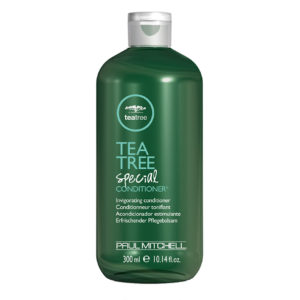
Aqua (Water, Eau), Cetearyl Alcohol, Isohexadecane, Isododecane, Behentrimonium Methosulfate, Melaleuca Alternifolia (Tea Tree) Leaf Oil, Hedychium Coronarium (White Ginger) Flower/Leaf/Stem Extract, Algae Extract, Aloe Barbadensis Leaf Extract, Rosmarinus Officinalis Leaf Extract, Anthemis Nobilis Flower Extract, Simmondsia Chinensis Leaf Extract, PPG-5-Ceteth-20, Citric Acid, Tetrasodium EDTA, Magnesium Nitrate, Bisamino PEG/PPG-41/3 Aminoethyl PG-Propyl Dimethicone, PEG-12 Dimethicone, Sodium Glycolate, Methylisothiazolinone, Methylchloroisothiazolinone, Magnesium Chloride, Sodium Hydroxide, Parfum (Fragrance), Limonene, Cl 42090 (Blue 1), Cl 19140 (Yellow 5).
Paul Mitchell Tea Tree Special Conditioner is a salon-favored option that harnesses the natural anti-dandruff properties of tea tree oil.
- It features a basic conditioner formula similar to Head & Shoulders, enhanced with herbal extracts and substituting zinc pyrithione with tea tree oil.
- It shares the same preservative system as the primary Head & Shoulders formula, using Methylisothiazolinone and Methylchloroisothiazolinone.
- Many users report positive results in dandruff control, though some find it drying and not the best overall conditioner in terms of hydration.
- Availability is generally good through salons and beauty supply stores, but the price point can be higher than mass-market brands.
- The use of primarily tea tree oil as the active anti-fungal is a notable advantage for those seeking simpler, essential oil-based solutions. Many other tea tree oil conditioners include a blend of essential oils, which can increase the risk of irritation for some.
Other Tea Tree Oil Conditioners:
- Trader Joe’s Tea Tree Tingle Conditioner
Ingredients: Water, Tea Tree Oil, Peppermint Oil, Eucalyptus Oil, Nettle Oil, Thyme Oil, Birch Leaf Oil, Chamomile Oil, Clary, Coltsfoot Leave, Yarrow Oil, Mallow, Horsetail Oil, Soybean Protein, Cetyl Alcohol (Plant Derived), Tocopherol (Vitamin E), Trace Minerals, Citric Acid (Corn), Sodium Hydroxymethglycinate, Grapefruit Seed (Citrus Derived)
- OGX Conditioner Hydrating TeaTree Mint
Water (Aqua), Cetearyl Alcohol, Behentrimonium Chloride, Cetyl Alcohol, Glycerin, Ceteareth-20, Fragrance (Parfum), Melaleuca Alternifolia (Tea Tree) Leaf Oil, Hydrolyzed Milk Protein, Mentha Piperita (Peppermint) Oil, Panthenol, Glycol Distearate, Glycol Stearate, DMDM Hydantoin, Isopropyl Alcohol, Dimethicone, Cyclopentasiloxane, Dimethiconol, Tetrasodium EDTA, Methylchloroisothiazolinone, Methylisothiazolinone, Yellow 5 (CI 19140), Blue 1 (CI 42090)
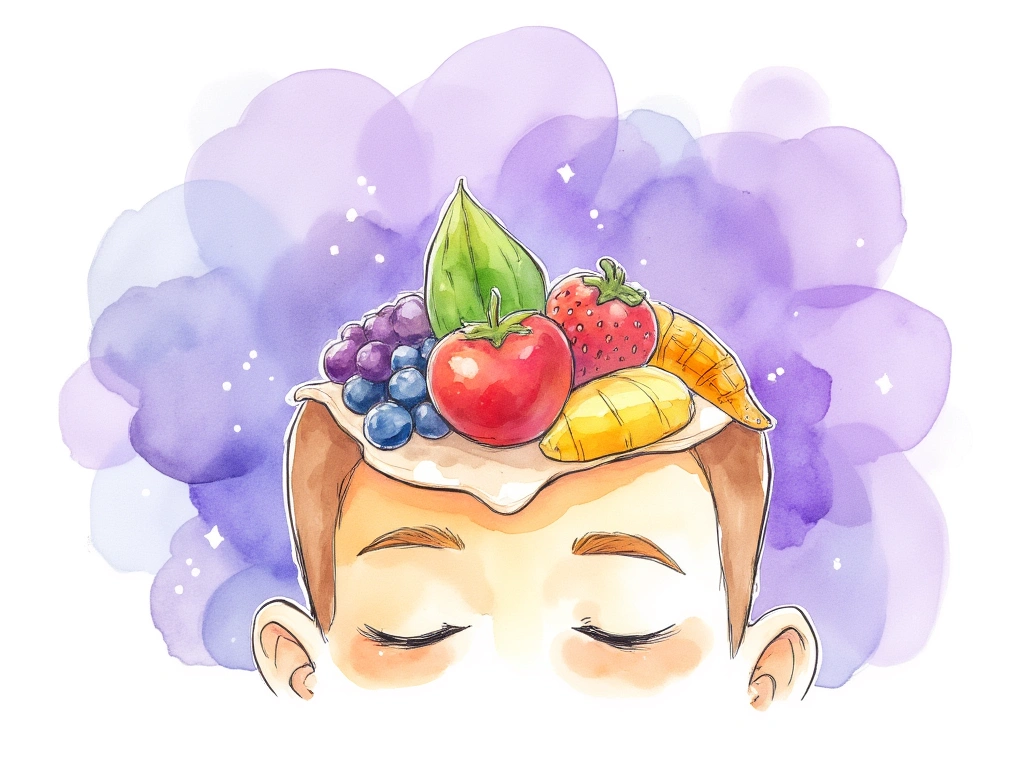
Further Considerations for Dandruff Management
Now that you have a solid understanding of seborrheic dermatitis, conditioner basics, and specific product options, let’s explore additional factors that can influence your dandruff management strategy.
Conditioner as Shampoo Replacement? Exploring Co-Washing
Some question the necessity of daily shampooing, particularly given that shampoos can strip the scalp’s protective acid mantle. Many surfactants in shampoos, while effective cleansers, can also disrupt the skin barrier and cause irritation, especially with frequent use.
If you struggle with persistent dandruff and scalp irritation, over-cleansing with shampoo might be a contributing factor. This can lead to a weakened skin barrier, increased sensitivity, and excessive moisture loss from the scalp.
To address this, many are exploring methods to reduce reliance on traditional shampoos.
One such method is co-washing, or “conditioner washing.” This involves using conditioner in place of shampoo on a regular basis, reserving shampoo only for when hair is heavily soiled. The theory is that conditioner can provide gentle cleansing and hydration without the harsh stripping effects of many shampoos, supporting better scalp barrier function.
This approach has gained popularity, with many online testimonials supporting its benefits.
Can conditioner effectively cleanse the scalp?
While debatable, some conditioners, particularly those formulated to rinse cleanly, may offer a degree of cleansing. Ingredients like stearyl alcohol and cetyl alcohol are considered mild surfactants and could contribute to gentle cleansing action.
However, richer conditioners that don’t rinse away easily would be less suitable for co-washing, potentially leading to product buildup and a greasy scalp.
Initial Adjustment Period with Co-Washing
Your scalp adapts to your routine. Frequent shampoo use can lead to increased sebum production [] as the scalp tries to compensate for stripped oils. Switching abruptly to conditioner-only washing may initially result in increased oiliness. Allow your scalp a few weeks to adjust to this new balance.
Co-Wash Conditioners for Dandruff Control
Certain conditioner formulas are better suited for co-washing, particularly for dandruff management. Consider these options:
- Head & Shoulders Moisture Care Dandruff Co-Wash Conditioner
- Trader Joe’s Tea Tree Tingle Conditioner
- Cantu Refresh Apple Cider Vinegar Root Relief
- Herbal Essences Naked Cleansing Conditioner (contains zinc pyrithione)
Individual results will vary. If one option doesn’t work, explore different formulas or active ingredients before dismissing the co-wash approach altogether.
Addressing Dandruff-Related Hair Loss
Hair loss is a distressing concern for many dandruff sufferers. If you are experiencing hair loss alongside dandruff, addressing both issues is crucial.
This topic is discussed in detail in a separate article: Reversing Seborrheic Dermatitis and Hair Loss.
While that article doesn’t specifically focus on conditioners, some key points remain relevant when choosing an anti-dandruff conditioner, especially if hair loss is a concern:
- Scalp buildup and blocked hair follicles due to dandruff can contribute to hair loss.
- Anti-fungal agents may help improve hair growth and reverse hair loss by addressing the underlying scalp condition.
- Consider conditioners with ingredients known to promote hair growth.
- Improving scalp circulation might be beneficial, but avoid harsh scrubbing or excessive stimulation, which could aggravate the scalp.
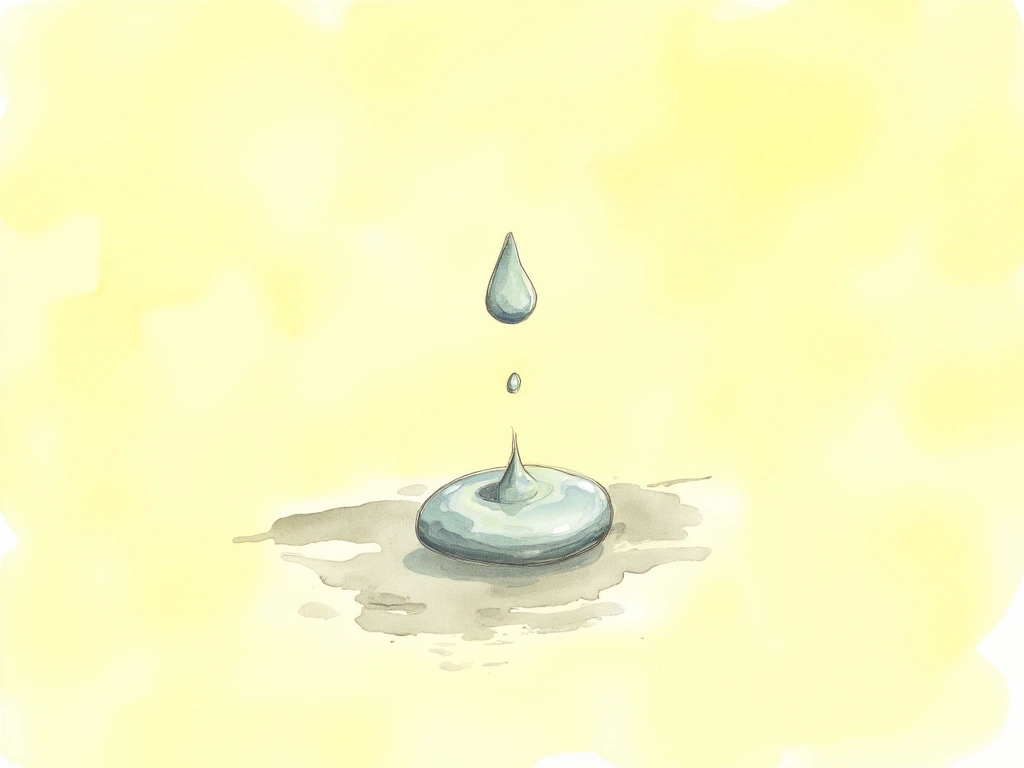
Final Thoughts on Conditioners for Dandruff
In my experience, prioritizing the restoration and maintenance of the scalp’s natural protective barrier is paramount for long-term dandruff and seborrheic dermatitis management. In this context, adopting a dedicated co-washing regimen (eliminating or significantly reducing shampoo use) holds considerable promise. Even alternating between shampoo and conditioner-only washing may offer benefits.
While I haven’t personally tested all the conditioners reviewed here, my experience formulating skincare products has provided valuable insights. Understanding formulation principles allows for more informed predictions about a product’s potential effectiveness.
If I were to personally select from the reviewed options, my choices would be:
- Head & Shoulders Moisture Care Dandruff Co-Wash Conditioner: Despite containing some less desirable ingredients like colorants and fragrance, and a stronger preservative system, the overall formula appears well-designed for a co-wash approach. Its focus on moisture retention and supporting scalp lipids may promote long-term scalp health and stability. Its specific marketing as a co-wash suggests it should function effectively as a standalone cleanser.
- Trader Joe’s Tea Tree Tingle Conditioner: I have used this conditioner previously, though only briefly. While I didn’t see dramatic results in that short period, I suspect that allowing for a scalp adjustment period might have led to improvements. Among tea tree oil conditioners, its ingredient list is particularly appealing, and it is very reasonably priced. I would likely use it as a co-wash if I revisited it.
- Sulfur8 Medicated – Regular Formula: This is an intriguing option due to its departure from common anti-fungal agents. Its texture might be heavy and application less convenient, but it could be effectively combined with a more conventional conditioner. Mixing a small amount of Sulfur8 with a larger quantity of a regular conditioner could mitigate potential irritation from its preservative and improve application. However, occasional shampooing might be necessary to address potential residue.
Alternatively, a more barrier-focused approach, completely avoiding anti-fungal agents initially, might be worth exploring. This would involve using very mild, natural co-wash conditioners designed to minimize irritation and support the scalp’s natural barrier. However, progress with this approach may be slower and more challenging compared to using proven anti-fungal treatments.
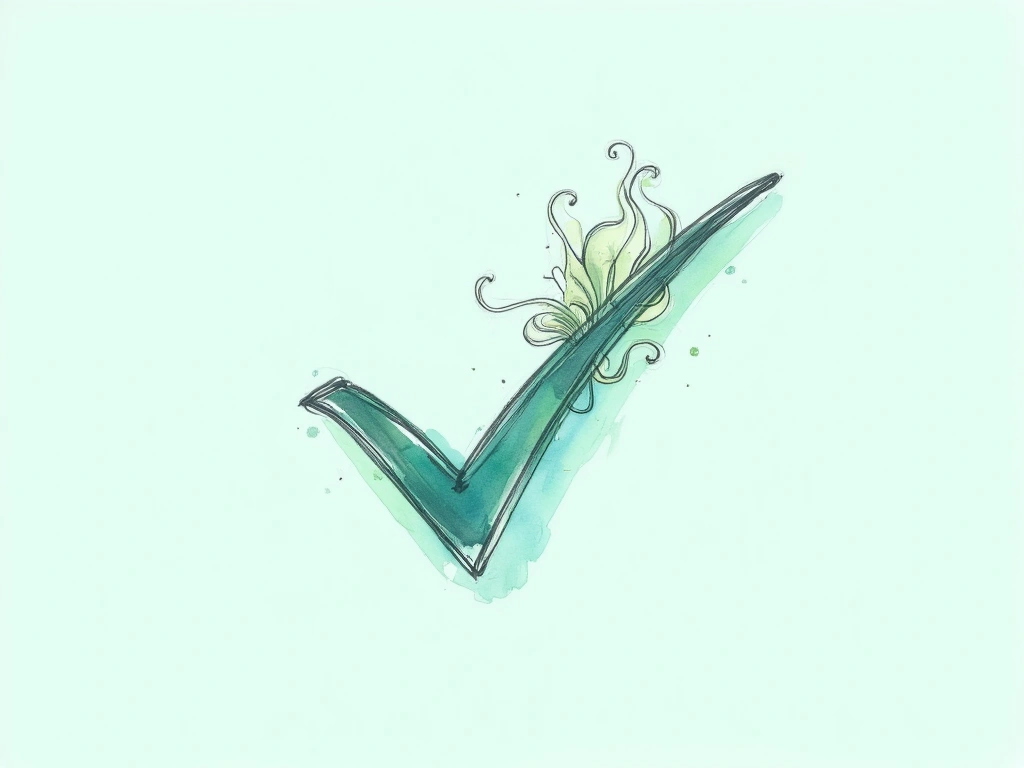
In Conclusion
This article aimed to provide a comprehensive guide to selecting the optimal anti-dandruff (seborrheic dermatitis) conditioner.
Here are the key takeaways:
- Dandruff is characterized by irritated scalp skin, dry flakes, inflammation, itching, increased sebum, and potentially hair loss.
- Dandruff and seborrheic dermatitis are considered variations of the same condition, differing mainly in affected areas and symptom severity.
- Malassezia yeast, common on human skin, breaks down sebum into oleic acid, which can disrupt the skin barrier and trigger dandruff symptoms.
- Conditioners are designed to replenish moisture and beneficial components stripped away by cleansing.
- Anti-dandruff conditioners utilize anti-fungal agents to reduce Malassezia activity, thereby decreasing oleic acid production and alleviating symptoms.
- Zinc pyrithione is a popular and widely used anti-fungal in conditioners, with options like Head & Shoulders Classic Clean, Equate, Nioxin, and Mizani.
- Sulfur is a less common anti-fungal choice, available in conditioners like Sulfur8 and Dr. Robaina.
- Salicylic acid conditioners exfoliate flakes but may be most effective when combined with anti-fungals.
- Tea tree oil is a natural anti-fungal gaining popularity, featured in conditioners like Paul Mitchell Tea Tree Special and Trader Joe’s Tea Tree Tingle.
- Co-washing, using conditioner instead of shampoo, can be beneficial for dandruff by preserving scalp barrier function.
- For dandruff-related hair loss, consider conditioners with hair growth-promoting ingredients and address scalp health comprehensively.
Hopefully, this guide has provided valuable information to assist you in your journey to finding the right anti-dandruff conditioner. Remember, persistence is key. If one approach doesn’t work, continue exploring different options and ingredients.
Please share your experiences and feedback in the comments below – whether with the conditioners mentioned or other successful strategies. By sharing our collective knowledge, we can all work towards healthier scalps.
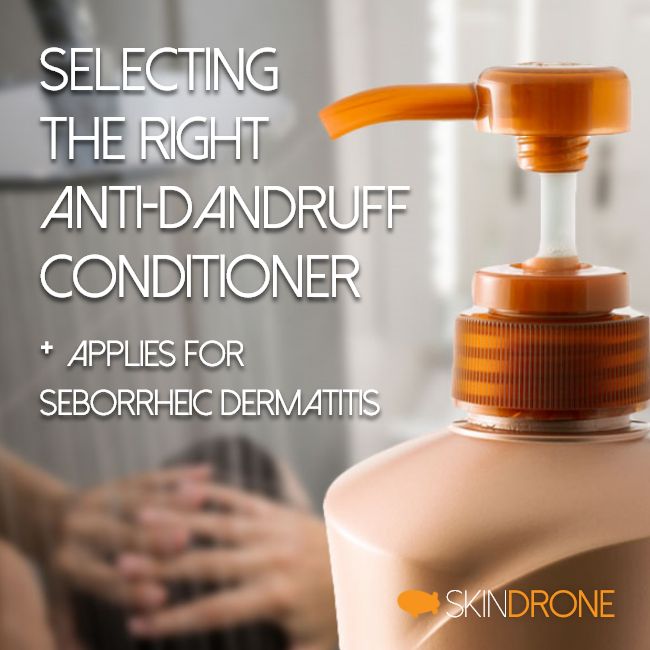
I’m curious if anyone has tried these products:
which are geared towards not disrupting the microbiome. I think the concept is in line with this forum. I am considering using these products before the Biom8 oil.
Reply Permalink